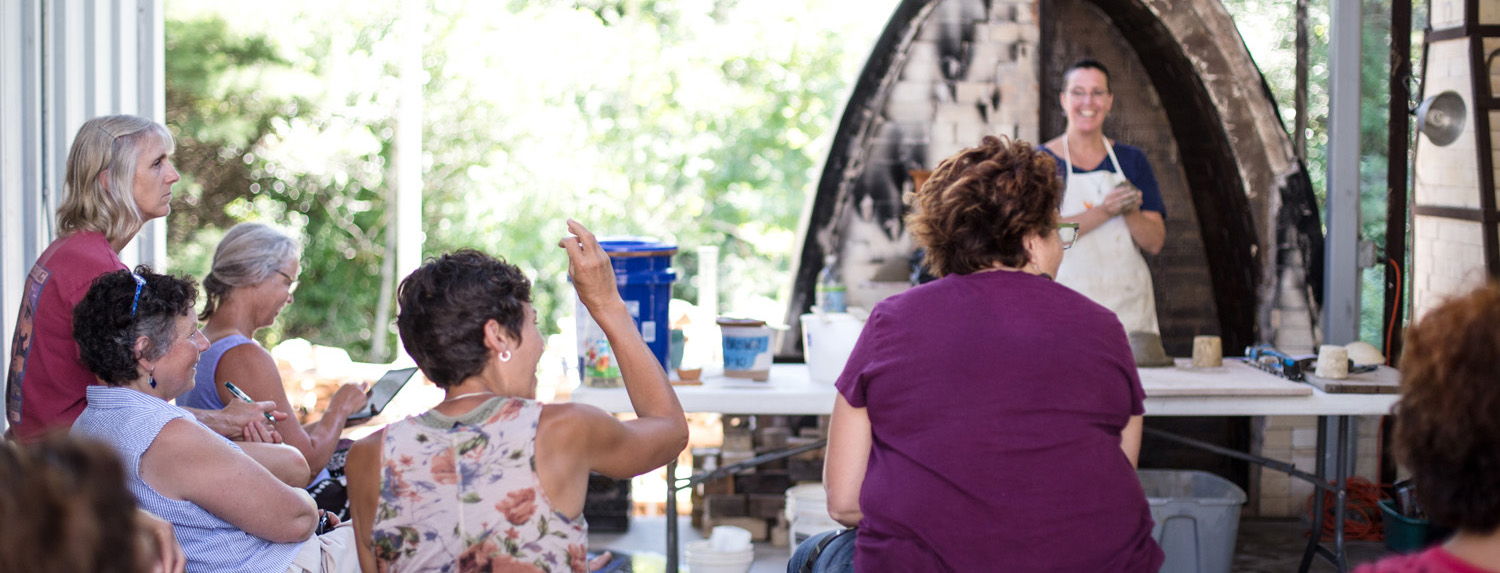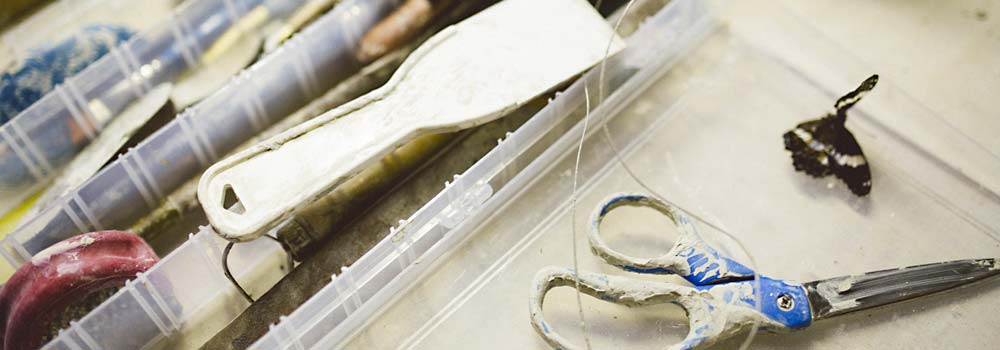 In mid-July, Watershed hosted a one-week residency session for K-12 art educators. This pilot project provided a rare opportunity for teachers from Maine and beyond to connect, learn new skills and strategies, and work on their own art. Over the course of the week, we (Liz Proffetty and Malley Weber, Watershed’s teaching artists) led morning mini-workshops on a range of topics relevant to classroom art teaching. Participants then spent the afternoons working on independent studio projects.
In mid-July, Watershed hosted a one-week residency session for K-12 art educators. This pilot project provided a rare opportunity for teachers from Maine and beyond to connect, learn new skills and strategies, and work on their own art. Over the course of the week, we (Liz Proffetty and Malley Weber, Watershed’s teaching artists) led morning mini-workshops on a range of topics relevant to classroom art teaching. Participants then spent the afternoons working on independent studio projects.
During the first day of the session, Liz shared surface decoration techniques including sprigs, sgraffito, terra sigilatta, silk-screen, mono-printing from newsprint and digital decal transfer techniques with the group. Amaco kindly donated teacher’s palette glazes and underglazes for the participants to use throughout the week.
On Tuesday morning, Liz wowed the educators with techniques and tricks to create thrown and altered forms that could be taught to middle and high school students. In the afternoon, some participants collaborated on a raku firing, others made a break for the local swimming hole, and a third group joined Watershed summer staff member Megan Stevens for an impromptu glaze mixing lesson.
During the Wednesday morning session, Malley shared information about Potters for Peace, a nonprofit group of ceramists whose work addresses the impact of the global water shortage. By partnering with factories around the world, the Potters help make effective ceramic filters for those without access to potable water.
Inspired by their efforts, Malley used a multidisciplinary STEAM (Science, Technology, Engineering, Art and Math) approach to develop a lesson on creating ceramic filters from Maine clay. She demonstrated how to create a filter for the group and received helpful feedback from the teachers on how they might adapt the lesson to use with their own students.
Later in the week, Studio Manger Reeder Fahnestock discussed how to repair electric kiln elements and thermocouples. He explained how to tackle basic repairs and helped the group better understand the inner workings of electric kilns.
Each day after lunch, teachers shared lesson plans and/or ideas with one another. Some seemed reluctant to share at first, but they received enthusiastic support and encouragement from their colleagues.
The group’s final day in session was filled with excitement as participants unloaded their final glaze kilns. Many tests, experiments and creations were “oohed” and “ahhed” over, and last minute notes were taken before the artists parted ways. Perhaps the most valuable part of the residency was the community that formed so quickly. It was clear that participants developed friendships and contacts that will benefit them personally and professionally for years to come.
We are grateful to The Belvedere Traditional Handcrafts Fund of the Maine Community Foundation, who provided support for the session. We also extend a special thanks to the art educators who put so much of themselves into teaching the next generation of artists. It was a pleasure to work with all of you!







